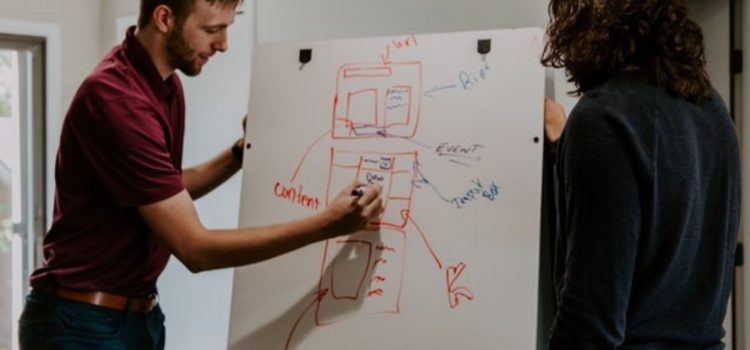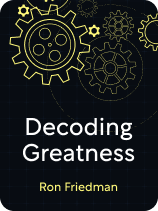

This article is an excerpt from the Shortform book guide to "Decoding Greatness" by Ron Friedman. Shortform has the world's best summaries and analyses of books you should be reading.
Like this article? Sign up for a free trial here.
What work do you admire? What if you could make your own version of it? How does reverse engineering enhance creativity?
Ron Friedman argues that doing great work isn’t just about being talented or working hard. It’s about learning from the greats in your field by reverse engineering their creations. He explains how to reverse engineer the work you love and make it your own.
Read more to learn how reverse engineering works and how to make it work for you.
How to Reverse Engineer Anything
Reverse engineering is the process of analyzing and reproducing existing work in order to enhance your skills and expand your creativity. Friedman explains that, while reverse engineering might feel derivative (since you’re borrowing from others), in the long term it actually makes you more creative because it builds your mental library of successful creative “recipes” and techniques.
(Shortform note: Though the individual ideas in your mental library might not be original (since you’ve acquired them by studying other people’s works), you may find that over time, you start combining these ideas in ways that are original. In Hyperfocus, Chris Bailey argues that creativity is a matter of connecting disparate “chunks” of information stored in your brain. He suggests that, the more high-quality information you learn, the better your chances of connecting that information to new insights. In other words, you can also think of reverse engineering as one way of curating a large number of high-quality “chunks” related to your field.)
We’ll explain how to reverse engineer works that you love. Then, we’ll share Friedman’s strategies for moving from copying and reproducing existing works to making creative contributions of your own.
(Shortform note: Friedman’s advice to base your creativity on the works of others echoes a well-known apocryphal statement—variously attributed to Pablo Picasso, T.S. Eliot, and Steve Jobs—“Good artists copy. Great artists steal.” While it appears that no great artist, poet, or tech maven ever actually said this, Eliot did express a similar sentiment when he wrote, “Immature poets imitate; mature poets steal; bad poets deface what they take, and good poets make it into something better, or at least something different.” As we’ll see, Friedman’s contention that reverse engineering makes you more creative lines up with Eliot’s definition of a good poet as one who steals ideas in order to make something different and (hopefully) better.)
The Process of Reverse Engineering
Friedman explains that reverse engineering is a matter of finding the underlying structures and formulas in your favorite works. To find these structures, he says, you should collect examples of work that you love and analyze it to learn how it was made. Friedman offers a variety of techniques you can use to analyze work that you admire.
Copy
The simplest way to absorb the principles of great work is simply to copy it as closely as you can. By doing so, you’ll start to notice the decisions that more experienced practitioners made, which gives you a wider palette to draw from in your own work. For example, jazz musicians learn how to improvise by transcribing and practicing solos by established musicians in order to see how the experts choose which notes to play when.
(Shortform note: In Steal Like an Artist, writer and illustrator Austin Kleon offers similar advice, adding that especially when you’re starting out, copying can help you get past the initial intimidation you might feel when facing a blank page or canvas. Kleon also adds that your copies are bound to be imperfect, which is a good thing: The differences between your work and your model are the basis of your own style and voice.)
Find a Template
Another technique is to find the templates underlying your favorite works. To do so, Friedman suggests making a reverse outline of a work you like in order to reveal the larger structure behind it. By doing so, you’ll discover templates that you can follow when creating your own work. For example, if you want to create a police procedural television show, you could study your favorite examples of such shows to learn the basic formula their scripts typically follow: Someone discovers a crime, investigators study the crime scene, police interview suspects, the case seems stuck until someone has a clever insight, and finally, there’s a dramatic chase, confrontation, or arrest.
(Shortform note: This technique can be used for virtually any creative work, as most creative endeavors are formulaic in one way or another. For example, in The Hero With a Thousand Faces, Joseph Campbell argues that most of the world’s stories follow the same basic structure, which he calls the hero’s journey. Similarly, the visual arts employ compositional templates such as the rule of thirds and the golden triangle that are known to create pleasing images. Meanwhile, most music adheres to established patterns and structures at the micro and macro levels, such as Western classical music’s reliance on key centers (such as C major) and prescriptive forms such as the sonata or the symphony.)
Break It Into Metrics
Instead of using a reverse outline to reveal the generic structure underlying your favorite works, you can also break a work down into a set of metrics that give you a statistical (rather than structural) target to aim for in your own creations. For example, if you’re crafting a company-wide email, you might study previous emails from your supervisors to discover that they typically contain two or three major points, keep paragraphs to eight lines or less, and their subject lines are 10 or fewer words. If your email adheres to these metrics, Friedman suggests, you’re probably on the right track.
(Shortform note: Studying the metrics of your favorite works can yield insights that go beyond target numbers and statistical curiosities. For example, in The Bezos Blueprint, Carmine Gallo analyzes Amazon founder Jeff Bezos’s communication style using the same approach Friedman describes here. Gallo finds that according to a mathematical formula, Bezos’s shareholder letters typically fall at a reading level between 8th and 10th grade. Gallo takes this insight a step further by generalizing that good communication is about writing as simply and clearly as possible.)
Turn Copying Into Creativity
Friedman notes that most people resist the idea of copying or even taking influence from existing work, fearing that doing so will limit creativity. However, he argues that thoughtful reverse engineering actually enhances your creativity. That’s because, according to Friedman, successful creative ideas balance formula with novelty. If an idea is too familiar, it’ll feel boring and derivative. But if it’s too creative—if there’s nothing your audience can immediately grasp—it might be rejected for seeming crazy or unrelatable.

———End of Preview———
Like what you just read? Read the rest of the world's best book summary and analysis of Ron Friedman's "Decoding Greatness" at Shortform.
Here's what you'll find in our full Decoding Greatness summary:
- The secret shortcut to elite performance and creative innovation
- How to reverse engineer someone else's work to create your own
- How to lower the stakes of failure by mitigating your creative risks






